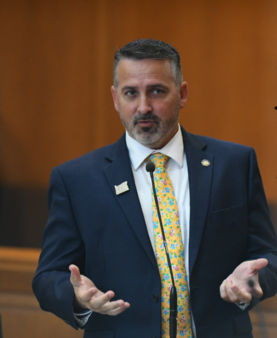The Pioneer staff sent Representative Javadi a follow-up question regarding his response on campaign funding, to help provide our readers with full transparency.
You stated: “99.54% of donors are from people, businesses, unions, and political action committees who live and/or do business in Oregon. The majority of the few people who have donated to my campaign from out-of-state are friends and family.”
Could you kindly provide more specific details on your campaign contributions? Here’s what would be very helpful:
- The percentage or total amount of individual contributions under $100.
- The aggregate amount contributed by businesses, and if possible, how many of these businesses have annual revenues under $15 million.
- For businesses contributing with revenues over $30 million annually, could you specify the primary industries they belong to?
- A detailed list of contributions from Political Action Committees (PACs), including the state of origin for the top 5 largest contributions.
This information would greatly enhance the public’s understanding of your campaign’s financial backing and align with the transparency voters cherish.
Here is Representative Javadi’s response:
Thank you for the follow-up question. Using Orestar, you can export the data into an Excel spreadsheet, which allows you to sort by various criteria, such as donation amounts and contributor names. This should make it easier to identify how many donors contributed less than $100. Additionally, out-of-state donations are marked in red for quick reference.
However, determining the revenues of business contributors may be more challenging. You would need to look up each business individually, and for private companies, their financial information may not be publicly available (e.g., Hampton Lumber).
While Orestar provides a lot of useful information, it does have some limitations.
For context, I limited my calculations to donations made since Fall 2023. There were few donations before this for the current election cycle, and I assumed it would be more relevant for comparison with my opponent.
Regarding the origin of contributions, while some donors have headquarters or homes outside Oregon, all of them have operations, employees, or investments in the state. For that reason, I consider their donations as in-state contributions. Similarly, SEIU and AFSCME, though national organizations, have members and operations in Oregon, so their contributions are also considered in-state.
PACs like Bring Balance, Evergreen, and Future PAC often aggregate donations from businesses and unions both inside and outside Oregon. These funds are distributed to political candidates from both parties, and it’s difficult to determine how much of each contribution came from in-state vs. out-of-state or from large vs. small businesses or unions. This adds complexity to tracking the sources of funds.
I hope this helps clarify the information you need.
Yes and no, Representative Javadi … so you did include companies that “do business here” as in state contributors to get to “99%”, which is not accurate or transparent, and the Orestar system does not classify those donations that way.
For the record here is a list of just a few of Representative Javadi’s out-of-state contributions – to see the full list yourself – here’s the link – Orestar :
Koch Industries (multiple donations over $20,000), Amazon, Pfizer, Abbott Laboratories, Novo Nordisk, NFIB, CVS, International Paper, American Chemical, Johnson & Johnson, Kroger, Allstate, Weyerhauseur, AmGen, Sttate Farm,m Altria, Reynolds, Zillow, Physicians Insurance and several more. As has been detailed in other letters to the editor and op/eds, Representative Javadi has amassed well over ONE MILLION DOLLARS. Please carefully consider who you want representing you at the state legislature – someone bought and paid for by dozens of corporations. Who do you think he will be working for?


.png)